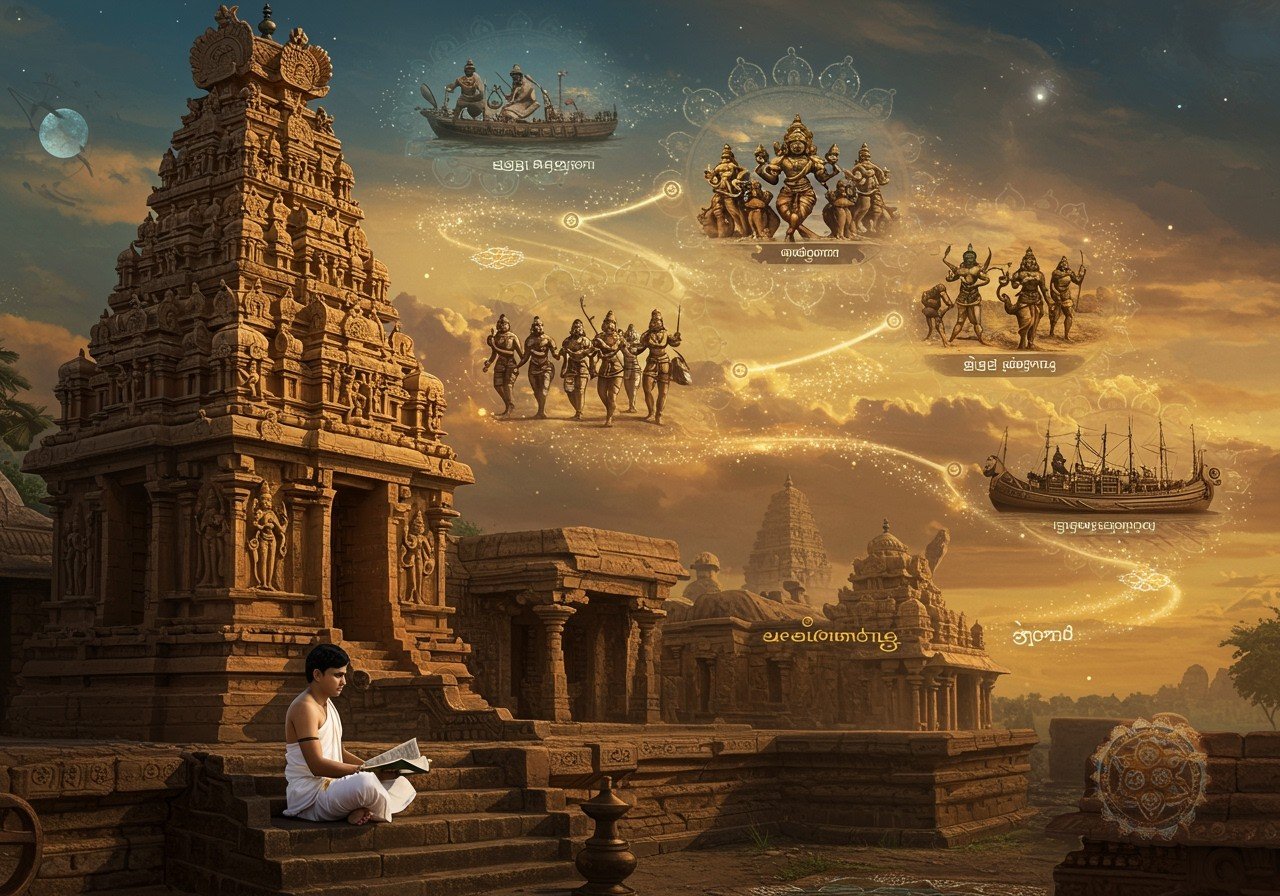
South India presents a captivating blend of culture and tradition, shaped by centuries of history. This article offers a beginner-friendly exploration of South Indian history, covering key events, dynasties, cultural practices, and significant influences. We aim to present this information simply and engagingly, appealing to those who cherish India’s heritage.
Prehistoric and Ancient South India
Early History and Archaeological Discoveries
South India’s history begins in prehistoric times. Archaeological finds of Stone Age tools in Tamil Nadu reveal early human activity, providing insights into ancient lifestyles.
From Neolithic to Iron Age
The Neolithic period marked the start of agriculture and settled communities, transitioning into the Iron Age with advancements in tools and weaponry. This era saw significant cultural and technological growth.
Indus Valley Civilization’s Influence
The Indus Valley Civilization extended its reach into parts of South India, influencing the region’s cultural practices and development.
Megalithic Culture
South India is renowned for its Megalithic culture, characterized by large stone structures used for burials, offering a glimpse into ancient burial rituals.
Early Dravidian Settlements
Early Dravidian settlements played a vital role in shaping South Indian culture, contributing to language, art, and architectural styles.
The Sangam Age (3rd Century BCE – 3rd Century CE)
Sangam Literature
The Sangam Age is celebrated for its literature, known as Sangam literature, providing valuable insights into the period’s society and culture.
Major Dynasties
- Cheras: A prominent dynasty ruling parts of present-day Kerala and Tamil Nadu.
- Cholas: Known for their maritime power and extensive empire, influencing Southeast Asia.
- Pandyas: Ruled regions of southern Tamil Nadu, known for their patronage of literature and trade.
Cultural and Economic Progress
Trade flourished with the Roman Empire and Southeast Asian countries, contributing to economic growth and cultural exchange.
The Age of Empires (6th Century – 14th Century)
Pallava Dynasty
The Pallava dynasty significantly contributed to art and architecture, exemplified by the magnificent temples of Mahabalipuram, showcasing intricate carvings and grandeur. These temples are a testament to their artistic and religious devotion.
Chola Dynasty (9th Century – 13th Century)
The Chola dynasty represents a golden age, marked by administrative innovations and breathtaking temple architecture, including the iconic Brihadeeswarar Temple in Thanjavur. Their reign witnessed flourishing literature, music, and dance forms.
Chalukyas and Rashtrakutas (6th Century – 10th Century)
The Chalukyas and Rashtrakutas were influential dynasties known for their contributions to art, architecture, and culture. They left behind impressive structures like the rock-cut temples at Badami and the Ellora Caves, showcasing their architectural prowess.
Vijayanagara Empire (14th Century – 17th Century)
The Vijayanagara Empire played a crucial role in unifying South India and promoting Hindu culture through magnificent temples like those in Hampi, a UNESCO World Heritage site. Their legacy includes a rich blend of cultural influences.
Cultural and Religious Developments
Jainism and Buddhism
The spread of Jainism and Buddhism across South India left a lasting impact on art and architecture, evident in the renowned rock-cut caves of Ajanta and Ellora.
Bhakti Movement (7th Century – 12th Century)
The Bhakti movement sparked a spiritual renaissance, inspiring devotional literature and music, influencing poets like Appar and Tiruvalluvar. This movement emphasized personal devotion and a direct connection with the divine.
Colonial Era and Independence (16th Century – 1947)
Arrival of Europeans
The arrival of European powers, including the Portuguese, Dutch, French, and British, marked a significant turning point in South India’s history, impacting its political, economic, and social landscape.
Modern South India (Post-1947)
Formation of Linguistic States
Post-independence, the formation of linguistic states aimed to preserve regional identities, strengthening cultural bonds within each state.
Exploring South India’s Heritage with Poojn.in
Poojn.in, India’s largest cultural goods and services store, offers a wide range of products to connect you with South Indian traditions. Explore authentic puja items, including brass lamps (kuthuvilakku), bell metal items, copper vessels, and regional specialties like kumkum and vibhuti. Poojn.in provides pan-India delivery and expert support for all your traditional needs.
Conclusion
South India’s history is a vibrant tapestry of culture, tradition, and heritage. Understanding this past allows us to appreciate the customs, art, and values that shape our present. As we move forward, it’s crucial to preserve our traditions while embracing progress, honoring our ancestors’ contributions, and continuing their legacy with pride.


